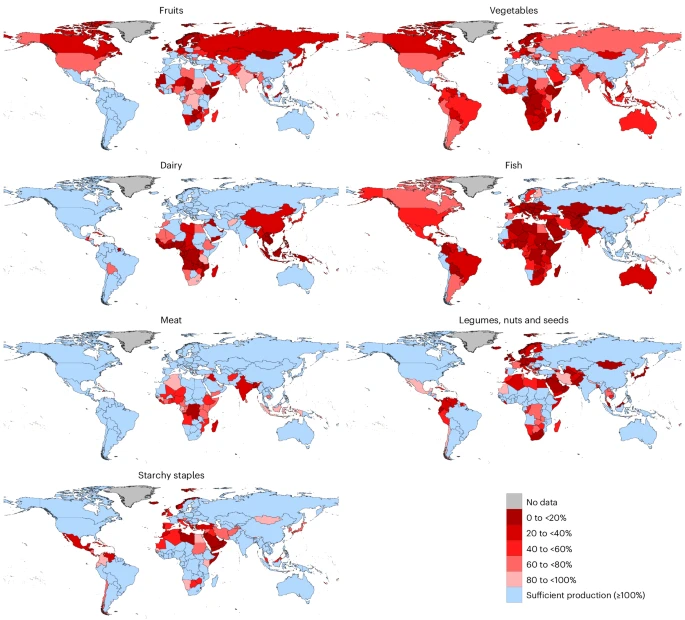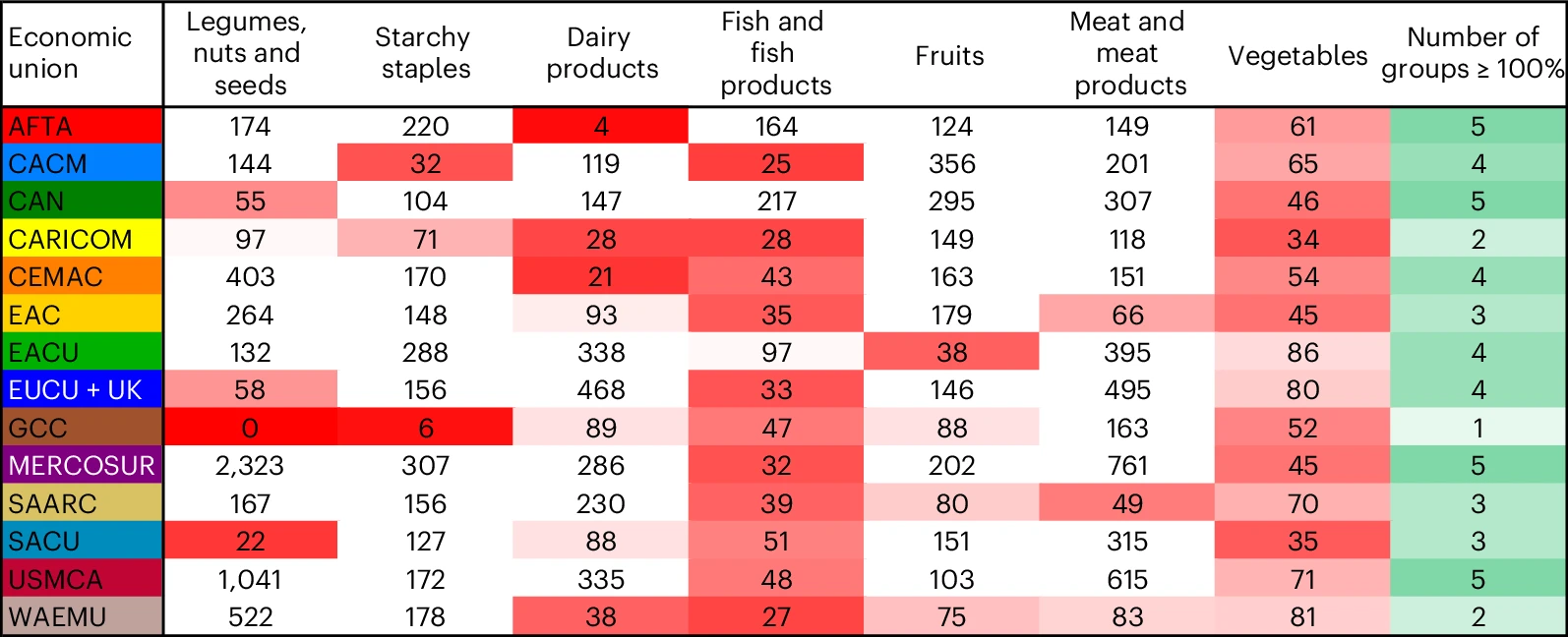get these nets
Veteran
05/16/25
Gap between national food production and food-based dietary guidance highlights lack of national self-sufficiency
Main
Recent disruptions—such as the COVID-19 pandemic and the outbreak of the war in Ukraine—have underscored the vulnerability of long food supply chains, prompting renewed discussions on self-sufficiency6This raises the question of whether countries can achieve food self-sufficiency. We use Food and Agricultural Organization (FAO) Food Balance Sheets (FBS) 2020 production data and the World Wildlife Fund’s (WWF’s) Livewell diet to analyse the discrepancy between domestic food production and dietary guidelines across seven food groups.
Out of 186 countries, 154 can fulfil the requirements for 2 to 5 out of 7 food groups of the Livewell diet through domestic production (Fig. 1). Only Guyana achieves self-sufficiency for all seven food groups, while China and Vietnam attain six. By contrast, six countries, primarily in the Middle East—Afghanistan, United Arab Emirates, Iraq, China Macao Special Administrative Region, Qatar and Yemen—do not achieve the needs of any food group (Fig. 1). More than one-third of all countries achieve self-sufficiency for two or fewer groups; 25 are in Africa, 10 in the Caribbean, and 7 in Europe. Only one in seven countries achieve self-sufficiency in five or more food groups, most within Europe and South America
Fig. 1: Percentage of self-sufficiency for specific food groups

Fig. 2: Percentage of self-sufficiency for specific food groups at different regional levels

Last edited: